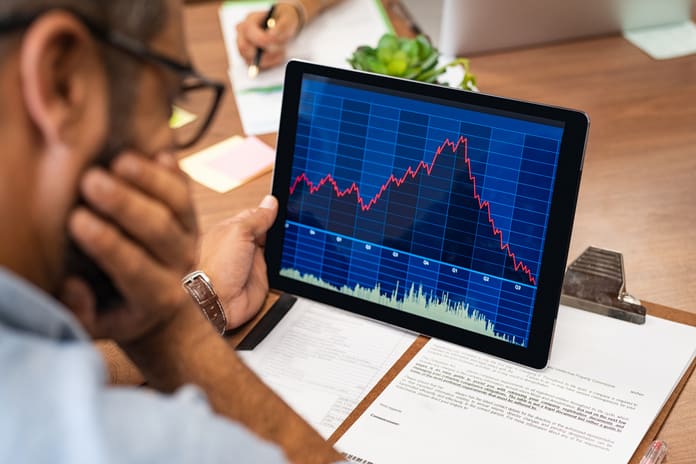AT&T (NASDAQ:T) is facing cost pressures after releasing its Q2 2022 Earnings report. This earnings season, corporate earnings have been generally strong. However, AT&T left something to be desired in general. Some of the challenges we discovered were unexpected and will be discussed. Management is undoubtedly taking proactive steps, such as selected pricing adjustments, to address as many of the very real inflationary pressures that exist. It may not be enough for the time being, and we may see an evolving price approach that allows even the most loyal consumers to take advantage of special offers while also recruiting new clients. At the same time, the company is facing significant cost challenges in its operations. Inflationary pressures are mounting. During the conference call, the CEO mentioned the following pressures:
“…costing more than $1 billion above the elevated cost expectations embedded into our outlook. We’re clearly operating in different times, and the macroeconomic backdrop is evolving in a dynamic manner. ”
While this new legacy-oriented AT&T (NASDAQ:T) has improved its financial situation, the fact remains that it must continue cost-cutting initiatives or else expect ongoing earnings pressure. The truth is that the services they give are more of a necessity than a luxury, which helps, but there is so much competition. Obtaining advertising materials to entice clients only partially counters these effects. We’ve never seen anything like this before. One comment made by the CEO on his performance really expresses the agony:
“….the current environment is not easy to predict. We’re seeing more pressure on Business Wireline than expected. And on the consumer side of our business, we’re seeing an increase in bad debt to slightly higher than pre-pandemic levels as well as extended cash collection cycles.”
In short, the company is implying that it is operating in a recession. That has been a major fear of many investors. The big bad “R” word recession. This statement suggests pain. It is not all bad. There are some positive signs that were noted.
A Big Top-Line Surprise
Overall, our revenue forecast for Q2 2022 was slightly lower than the average. The consensus estimate among analysts covering the company was $29.47 billion. We projected sales to be closer to $29.75-29.80 billion, based on the company’s opinion that it was still seeing healthy demand from businesses and consumers, given that unemployment remained so low throughout the quarter and employers were unable to find enough workers. In short, despite inflationary pressures, things appeared to be in good shape. Surprisingly, the top line hit $29.60 billion, substantially higher than projected vs. consensus but a little lower than our overly optimistic forecast. This was an approximately $130 million increase over the consensus. Let’s dig a little deeper.
Earnings Outperformance
The top line success contributed to the bottom line beating expectations. Analysts expected $0.62, which was exceeded by $0.03 solid. Expenses continue to be greater than we would like, partially offsetting sales. The operating expenses totaled $24.7 billion. While this is lower than last year, remember the significant divestitures. Operating income declined to $5 billion, although after (many) adjustments, operating income increased slightly to $5.9 billion from $5.7 billion, including divestitures.
This is still a dividend play for the time being. Having said that, free cash flow will once again be more than enough to cover the dividend, and the essential payout ratio will remain safe, but cash flow is again a major problem. This took us completely by surprise.
Eye-Popping Free Cash Flow
We still own this stock since it generates revenue for us. However, free cash flow is critical to cover the dividend payment. To be honest, we haven’t had coverage concerns in years. We anticipated Q2 free cash flow of $2.0 to 2.5 billion, based on cash from operations of $7.0-$7.5 billion and capital investment of $4.5 billion. We were significantly under-estimated, as cash from operating activities was $7.9 billion, capex was $4.9 billion, and total capital investment from operations was an absurd $6.7 billion.
This is a serious issue for long-term income investors. Dividends paid totaled $2.09 billion, resulting in a $700 million deficiency. The payout ratio was a heart-stopping 150.7%.
Lot Of Debt Still
The debt has remained one of the most significant dangers associated with owning AT&T (NASDAQ:T). By selling assets and paying down debt, the company could reduce its debt and improve its balance sheet. It ran into some spectrum access auction complications last year, which added back some debt. Now that Warner Media has been spun off, the debt has been reduced, but the situation remains bleak. Net debt stood at $131.9 billion at the end of the second quarter, translating to a net debt-to-adjusted EBITDA ratio of 3.23x. This ratio has to be reduced significantly.
Our View of AT&T
This is a battleground stock with an income name. We believe the stock will fall rapidly from the $20s and then be purchased. We’d be big buyers for $15. The danger is that all of the money invested will not be repaid. Seeing the dividend barely cover its costs for the year is something we haven’t seen in a long time. This is despite the fact that the headline results show operational excellence. The problem is that management has been paying for this expansion.
What’s your final opinion? This income moniker is bearish in the short term but bullish in the long run. Allow it to fall sharply into 52-week lows, then hold your breath and buy. Expect selling pressure for the time being.
Featured Image: Megapixl © Rido

















